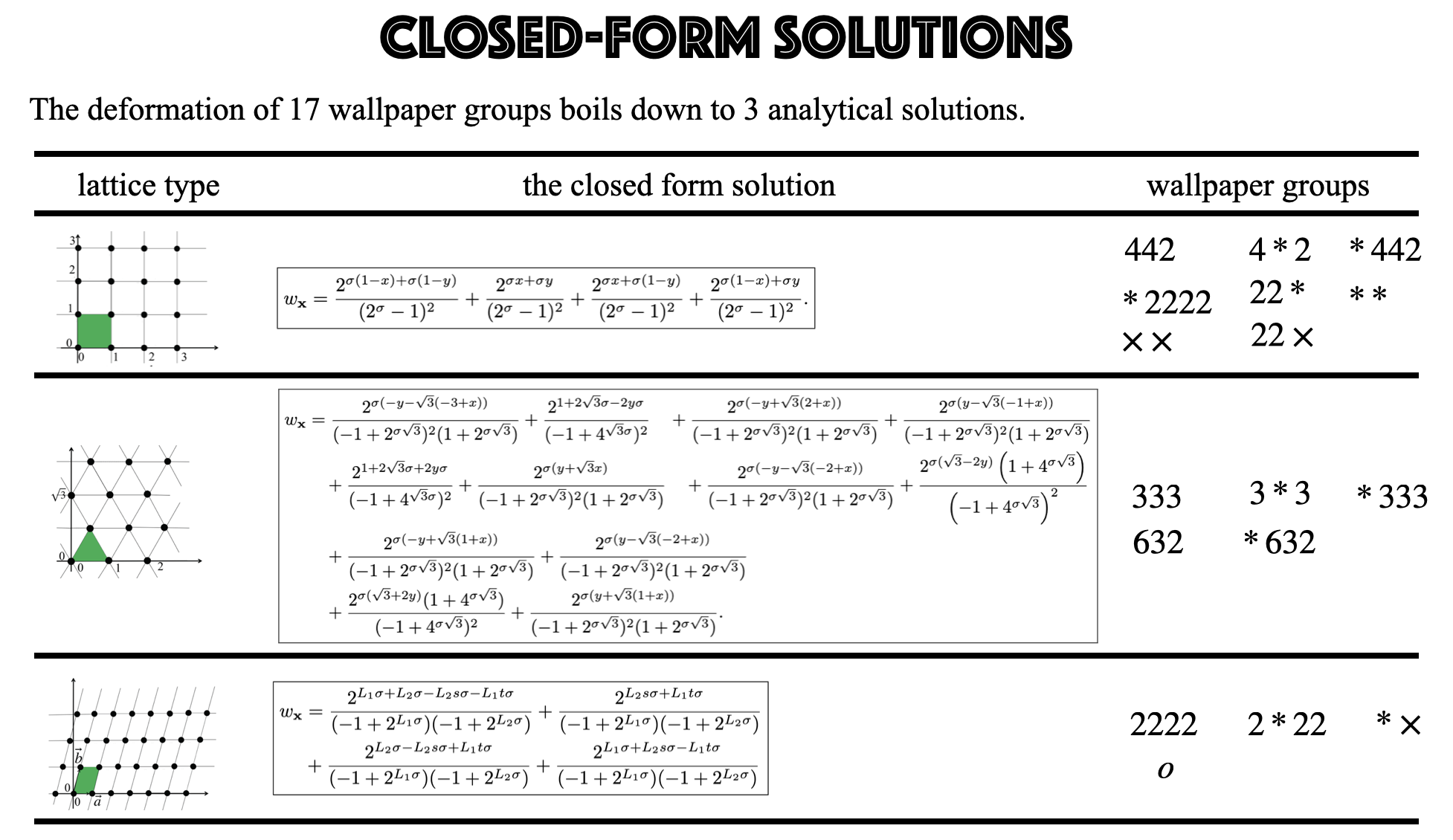Abstract
We present a real-time deformation method for Escher tiles—interlocking organic forms that seamlessly tessellate the plane following symmetry rules. We formulate the problem as determining a periodic displacement field and solve it analytically in closed form. Our method supports all 17 wallpaper groups and deforms both the boundary and interior of textured tiles. An adaptive fall-off parameter allows artists to control the locality and semantic intent of deformations in real-time. Applications include interactive photo editing, mesh sculpting, and pattern design for fabrication.
Videos
Supplemental Video
Technical Paper Fast Forward








Escher Tiles: Symmetry, Art, and Wallpaper Groups
Symmetry is inherently appealing to the human visual system. The Dutch artist M.C. Escher was known for creating intricate symmetric patterns with interlocking animal shapes. Wallpaper groups provide a mathematical framework for categorizing all symmetry types on the Euclidean plane—remarkably, just 17 distinct groups cover every possibility. Don't trust me on this just yet, try to classify all of Escher's artworks about symmetry on https://mcescher.com/gallery/symmetry/. You'll find all the patterns which regularly subdivid the plane fall into the 17 categories! I put my solution into a big table.
The Closed-form Solutions

Interesting Unsolved Problems?
A thorough theory and the corresponding software for symmetry downgrading using the concept of group and subgroup is yet to be proven and created. We only have two examples for now. In the first example, a ∗442 pattern is transformed into a 4 ∗ 2 pattern, representing a reduction in symmetry as 4 ∗ 2 is a subgroup of 442. In the second example, a 4 ∗ 2 pattern is further deformed into a *2222 pattern, reflecting another symmetry downgrade.

Acknowledgments
We are deeply grateful to Noam Aigerman and Thibault Groueix for their insightful discussions during the early stages of this project. We thank Abhijeet Chowdhury for helping with ETech prep and Taiwei Cui for the help in improving the GUI. We also appreciate Dan B Goldman and Alex Suter for feedback on the manuscript; Michael DiComo for DCC integration feedback; Ruben Wiersma for proofreading and M.C. Escher Company communications; Stephen N. Spencer for ACM proceedings guidance; and Fernando de Goes for discussions on divergence-free displacement fields.
BibTeX
@article{Chen25,
title = {Escher Tile Deformation via Closed-Form Solution},
author = {Crane He Chen and Vladimir G. Kim},
year = {2025},
journal = {SIGGRAPH}}